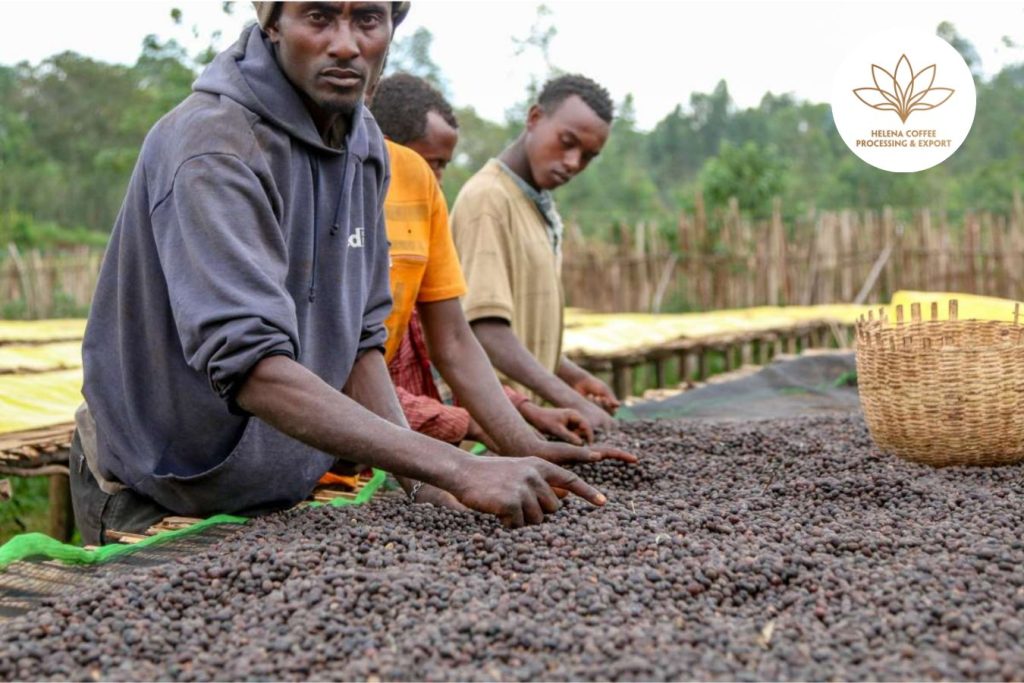Harar Coffee From Ethiopia: Ethiopia, the home of coffee, was the first stop on the black continent in our series of world coffee maps. Ethiopia features two types of coffee in the top ten of the world’s top ten specialty coffees, Yirgacheffes and Harar, which is ranked one level higher.
Harar is a city in eastern Ethiopia known for its history (Harar is considered a holy place in Islam) and its naturally dry-processed coffee. Harar was known for its coffee as early as the 16th century, and by the 1800s, it had grown into an important commercial center for coffee and other items.
Coffee production in Harar – Ethiopia
Harar coffee, or simply Harar, is Ethiopian coffee produced in the Harar region. The term “Hararopian” also describes the coffee variety grown in the Harar area. This coffee plant’s beans are typically yellow-green in color and medium in size. Harar coffee is one of the oldest coffee kinds still used to brew coffee today. Here’s a quick rundown of the Harar coffee profile:
Growing altitude: 1510 – 2120 meters above sea level
Arabica variety: Native Ethiopian variety
Harvest period: October to February
Processing process: dry processing
Taste: Berry, Earthy, Chocolate
Altitude – An essential factor in the quality of Harar. coffee
Coffees from Ethiopia, such as Yirgacheffe or Harar, are above the Strictly High Grown – SHG grade due to their height of over 1,500 meters.
The conditions that allow the coffee plant to grow more slowly enable more nutrients to nourish the fruit, resulting in a fully developed, flavorful coffee bean – this is one of the main reasons most coffees grow. Ethiopian coffee is well-known.
The place where coffee trees can’t live!
Coffees from Ethiopia, such as Yirgacheffe or Harar, are above the Strictly High Grown – SHG grade due to their height of over 1,500 meters.
The conditions that allow the coffee plant to grow more slowly enable more nutrients to nourish the fruit, resulting in a fully developed, flavorful coffee bean – this is one of the main reasons most coffees grow. Ethiopian coffee is well-known.
The coffee trees are old, some are pretty old (up to 200), and the cultivation process is entirely natural. There are no fertilizers or trimming in this garden. Harar coffee is referred regarded as “garden coffee” in Ethiopia; hence it has received one of the most popular certifications: organic coffee.
Because the region is so arid, Harar coffee beans are typically processed dry. Coffee cherries are sun-dried and then meticulously put on a drying rack by hand.
Classification of coffee Harar
The three-bean sizes of Hara coffee are Longberry, Shortberry, and Mocha Harriers, in declining order of size, but does size matter?
The unroasted Ethiopian Harar coffee classification is comparable to the Kenyan coffee classification, which is based on the size of the beans.
- Longberry (most giant coffee bean)
- Shortberry (small seed)
- Mocha (or Moka, Mocca) consists of Peaberry coffee beans.
Related posts:
- Coffee Production In Colombia – Specialty Coffee
- Tanzania Coffee – Coffee Production In Tanzania
- Yemen Mocha Coffee – Coffee Beans
References:
- Primecoffea, Cà phê Harar từ Ethiopia, Tháng Bảy 8, 2017
- Espressocoffeeguide.com – https://espressocoffeeguide.com/
- Cafeimports – https://www.cafeimports.com
- www.thespruceeats.com/ The Origins of Harar Coffee

